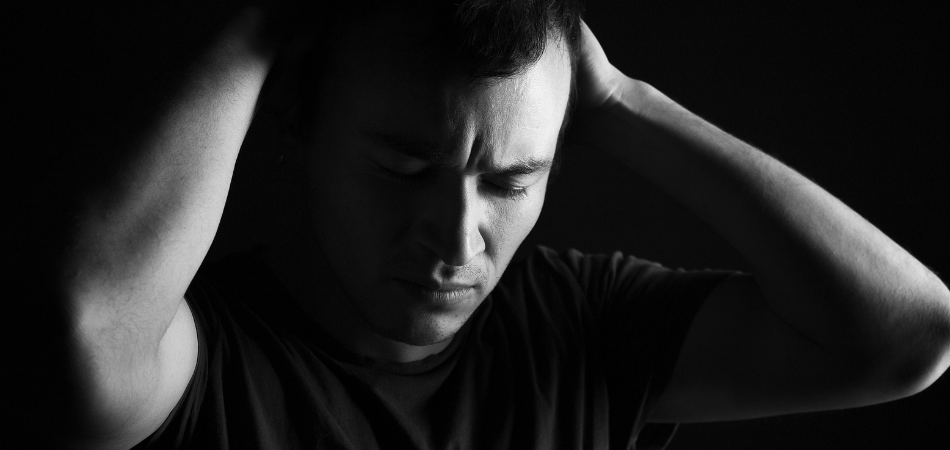Have you ever found yourself scrolling through socials, reading a magazine, or speaking with a friend, just to find yourself moving on to the topic of personality types? With countless quizzes and articles posing questions like: ‘what does your attachment style say about your personality?’ and ‘how is my attachment impacting my love life?’, attachment theory is a concept which has fascinated and intrigued audiences for quite some time.
First developed by psychologist John Bowlby in 1958, the attachment theory came about in an effort to understand more about human relationships. Bowlby theorised that the connections we build in childhood are critical to our emotional development, laying the foundations for all relationships in the future. According to Bowlby, individuals can display either secure or insecure attachments to one another – a fact which can offer a huge insight into our past and early experiences.
In fact, attachment theory can be useful when studying addiction, helping us to better understand how our dependence may have manifested, as well as potential triggers which can so often result in relapse. On this page, we will take a closer look at attachment styles, what they can teach us about ourselves, and how exactly they interconnect with one of the most dangerous relationships of all – addiction.
The four attachment styles
There are four attachment styles, each of which is said to tell us a lot about how we relate to the world.
Secure (++)
Individuals with a secure attachment style are usually brought up in a safe environment with a stable primary caregiver to turn to for support. Those with this attachment style tend to hold a positive image of themselves and others, maintaining relationships which are healthy and balanced. Confident in sharing their wants and needs with those in their circle, the securely attached person is clear in their intentions, with no problems asking for what they want.
Following this, there are then three subtypes of insecure attachment, which are as follows:
Avoidant (+-)
A person with an avoidant attachment style will hold a positive perception of themselves and a negative image of those around them. Usually raised in an unstable environment with inconsistent care from a guardian, the avoidant child can grow up to become wary of close or committed relationships, often deflecting from their own feelings to avoid conflict. Key traits of avoidant attachment can include:
- Maintaining a safe distance from other people
- Unlikely to seek help in times of need
- Fear of intimacy
Anxious (-+)
The anxiously attached individual will hold a negative image of themselves, but a positive view of others, typically feeling unworthy or undeserving of love. Much like the avoidant individual, anxious attachment can stem from an inconsistent upbringing, with caregivers appearing nurturing one day and cold the next. Those who are anxiously attached seek approval from other people; for example, they often require higher levels of intimacy and physical contact from their partner in a relationship. Some traits associated with anxious attachment include:
- Fear of abandonment
- Intense need for validation
- Insecurity in relationships
Disorganised/Fearful (–)
Those with a disorganised/fearful attachment style will hold a negative image of both themselves and of others. Growing up, the child can view their caregiver as a source of fear and insecurity, leading them to have a hard time trusting the ones around them. With a strong desire for approval but intense anxiety about trusting others, the disorganised/fearful adult can often be seen as inconsistent by their peers, building barriers to prevent themselves from getting hurt. Some traits of this attachment style include the following:
- Pursuing intense closeness or extreme separation, with no in-between
- Fearful of other people’s intentions
- Uncomfortable expressing affection
What does attachment style have to do with addiction?
You might be wondering, while this information is interesting, what does it have to do with addiction? Well, at its core, addiction has a lot to do with survival, and finding ways to cope or manage the world around us. As attachment styles are all about lived experiences and how they impact our relationships, addiction often stems from poor coping strategies, arising in efforts to compensate for insecure relationships. Below, we have outlined some potential reasons why individuals with each attachment style might turn to addiction.
Self-medicating to meet attachment needs…
(Typically seen in avoidant and fearful attachments.)
When your needs haven’t been met from a young age, it is likely you will grow up to become distressed or emotionally dysregulated, unsure of how to channel your needs in a healthy way. Unfortunately, this can make individuals prone to developing an addiction.
If you are unsure whether you might have ever been guilty of self-medication, ask yourself:
- Have you ever turned to alcohol or substance use to escape reality?
- Do you feel that taking part in certain behaviours compulsively helps to distract your mind from difficult emotions?
- Do you feel that alcohol or substance use helps to calm you down?
Getting caught in codependent relationships to feel secure…
(Typically seen in anxious attachments.)
For those who are raised in an inconsistent and unstable home, it is reasonable that, once having left that environment, they will respond by seeking out relationships which keep them safe and well looked after. Unfortunately, however, as these adults progress through life, they can turn to traits of sex and love addiction or codependency to manage their fears of abandonment. To find out if you have ever displayed traits of codependency, ask yourself:
- Do you ever put your loved ones on a pedestal, believing they are somehow too good for you?
- Are you frequently putting others’ needs before your own?
- Do you panic when you notice a loved one behaving coldly or distant?
To manage uncomfortable emotions…
(Seen across all attachments.)
All of us can go through moments where we experience unpleasant and powerful emotions. This could be in response to a particular event or unresolved trauma, and it is perfectly natural. However, for all the attachment types, addictive substances can be relied upon to escape distress, or some of the thoughts brought upon by their insecure relationships. Uncomfortable voicing their concerns to a loved one, these individuals will instead shift their focus to substances which help to numb the pain.
A chance to break unhealthy patterns of behaviour.
In life, we will undergo challenges that may require professional help to overcome, especially when we have spent years repeating the same patterns of behaviour. It can be particularly tough to break these habits without more specialised support. For this reason, addiction treatment can be a great tool for self-reflection, giving people a chance to assess their own issues with attachment, using their lived experiences to understand why they might have developed these unhealthy coping strategies in the first place.
Unfortunately, for those with insecure attachment styles (particularly the avoidant), they will be less likely to seek help. Rather than showing “weakness” to loved ones or admitting when challenges are too great, these individuals can instead develop unhealthy coping strategies to keep things on an even keel. However, some of the treatments employed in rehab can be particularly effective when addressing attachment styles and addiction. Some of these can include:
Workshops – Whilst attending addiction treatment, some centres, such as UKAT’s clinics, provide classes to teach clients more about their personality, including some of the relationship dynamics which may have contributed to their addiction. For example, ‘The Drama Triangle’ is a great method of viewing dysfunctional social interactions, analysing them through the lens of three main roles: Victim, Rescuer, and Persecutor.
Cognitive Behavioural Therapy (CBT) – Applying the principles of CBT can be valuable for clients in discovering the reasoning behind their own thinking, empowering them to either continue these unhealthy patterns of behaviour or to discard them for something altogether more beneficial.
Family therapy – Attachment styles have a lot to do with early relationships, especially the ones built between yourself and your primary caregiver. With the help of family therapy, this does not just help to heal relationships, but also can be crucial in targeting issues that exist within the family unit.
It is important to note that, regardless of your attachment style, addiction is an illness that can impact anyone at any time. While this theory can give us some insight into our addiction, we must remember that factors such as genetics, mental health issues and our environment can all contribute to the illness as well. Therefore, wherever you are in your journey with addiction, it is important that you keep an eye on your behaviours to protect your own health and wellbeing.




